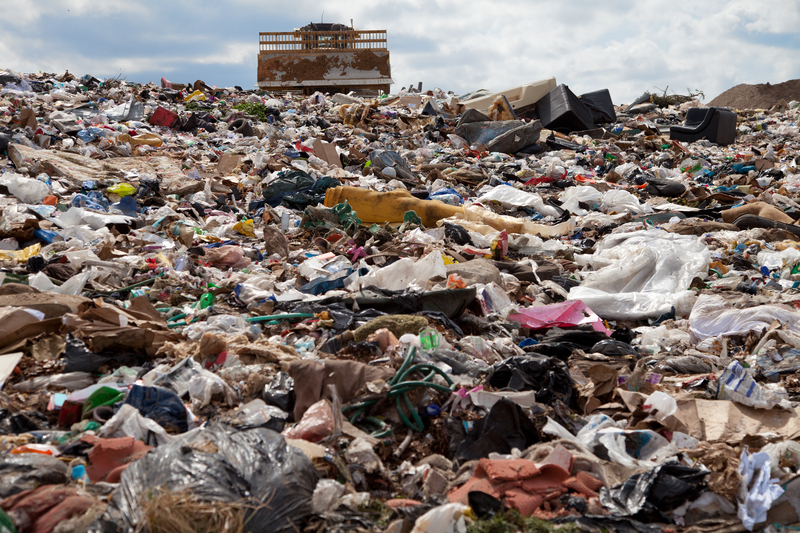Simple and Safe Methods for Disposing of Single-Use PPE
Personal Protective Equipment (PPE) such as face masks, gloves, and face shields have become part of our daily lives, especially during health crises like the COVID-19 pandemic. While these single-use PPE items are essential for safety, their widespread use has raised concerns about safe and environmentally friendly disposal. Disposing of PPE the right way is critical for public health and environmental protection.
In this comprehensive guide, we'll explore simple and safe methods for disposing of single-use PPE. We'll look at proper disposal techniques, recycling options, and best practices for both individuals and organizations. This article emphasizes responsible handling to prevent contamination and minimize environmental impact.
Why Is Proper Disposal of Single-Use PPE Important?
Used PPE can carry harmful pathogens and contaminants that pose a risk to humans and wildlife. Improper disposal of single-use face masks and gloves leads to pollution, health hazards, and the clogging of waste management systems. Therefore, understanding and implementing the correct disposal methods is essential for everyone.
- Prevents spread of infection by containing contaminated materials safely.
- Reduces environmental impact by keeping plastics out of waterways and wildlife habitats.
- Supports efficient waste management by reducing the strain on local disposal systems.

What Is Single-Use PPE?
Single-use PPE includes disposable gloves, face masks (medical or non-medical), gowns, shoe covers, and face shields designed for one-time use. These items are typically made from plastic polymers, making them non-biodegradable and challenging to recycle using conventional methods.
Main Types of Disposable PPE
- Disposable face masks (surgical, N95, KN95, etc.)
- Nitrile, latex, or vinyl gloves
- Plastic face shields and goggles
- Protective gowns and aprons
- Shoe and head covers
Simple Methods for Disposing of Single-Use PPE
To ensure safe disposal of single-use PPE, individuals should follow established guidelines that protect themselves and others. Below are simple, step-by-step methods you can follow at home, work, or in public areas.
Step 1: Remove PPE Correctly
- Take off gloves first: Pinch the outside of one glove and peel it away from your hand, turning it inside out. Hold the removed glove in the other gloved hand, then slide your finger under the wrist of the remaining glove and peel it off over the first glove.
- Remove mask or face shield last: Take it off by the straps or ear loops, without touching the front.
Step 2: Avoid Cross-Contamination
- Place all removed PPE directly into a designated waste bag or lined bin immediately.
- Do not place used PPE on surfaces or mix with regular household waste.
- Wash your hands with soap and water or use hand sanitizer immediately after removal.
Step 3: Dispose of PPE in a Sealed Bag
- Use a small, durable plastic or biodegradable bag to contain PPE waste.
- Seal the bag securely to prevent leaks or spills.
- Place the sealed bag in your general waste bin (not recycling or compost).
Step 4: Label Waste If Needed
- In households with infected or quarantined individuals, mark the bag as "hazardous waste" as recommended by local health authorities.
- Double-bag PPE waste in these situations for added safety.
Safe Disposal Methods for Businesses and Healthcare Facilities
For organizations, workplaces, and healthcare providers, safe single-use PPE disposal is regulated and demands stricter protocols.
Best Practices:
- Provide designated PPE disposal bins: Place clearly labeled bins at strategic locations (entrances, exits, near restrooms).
- Use color-coded waste bags: Red or yellow bags are often used for infectious waste.
- Train staff: Offer regular training sessions on proper PPE removal and disposal.
- Arrange regular collection: Partner with licensed medical waste disposal companies for reliable pickup and disposal.
Handling in Healthcare Settings
Medical settings must treat single-use PPE as biohazard waste:
- Use robust, leak-proof, and puncture-proof containers.
- Store waste separately from non-infectious trash.
- Follow local and international regulations for hazardous waste transportation and incineration.
Environmental Impact and What Not to Do
Never dispose of single-use PPE in:
- Sinks, toilets, or drains (masks and gloves can block sewage systems)
- Recycling bins (PPE contaminates recyclable materials)
- Public spaces, sidewalks, parks, or natural habitats
Improper disposal can cause PPE to enter water bodies and harm marine life. Birds, fish, and other wildlife can become entangled in masks and gloves or mistakenly ingest them. This also adds to the growing problem of plastic pollution.
Recycling and Upcycling Options for PPE Waste
Most single-use PPE is made from plastics that are not recyclable through regular municipal programs. However, innovation is underway to tackle PPE waste using specialized recycling, upcycling, and energy recovery methods.
Special PPE Recycling Initiatives
- TerraCycle PPE Recycling Boxes: Some companies, like TerraCycle, provide collection boxes and process PPE using advanced technologies.
- Local government programs: Check with city or county officials for pilot programs that accept PPE waste.
- Medical waste processors: Healthcare facilities can contract with certified disposal partners for environmentally friendly processing.
Upcycling Ideas for Non-Medical PPE
- Art projects and crafts: Clean, non-contaminated masks or face shields can sometimes be repurposed for creative projects.
- Industrial waste to energy: Some facilities can convert PPE plastic waste to fuel or construction materials.
Note: Only attempt recycling or upcycling with clean, non-medical PPE. Always prioritize public safety and hygiene.
How to Store and Transport PPE Waste Safely
If you must store used PPE before disposal, do so safely:
- Keep used PPE in a lined, covered, and secure bin away from children and pets.
- Avoid compressing or shaking the waste, which may release particles.
- If you transport waste to a disposal facility, wear gloves and use hand sanitizer immediately after handling.
Guidelines from Health Authorities and Environmental Agencies
The following official recommendations help ensure safe and responsible PPE disposal:
World Health Organization (WHO)
- Disinfect hands before and after handling used PPE.
- Use 'closed' bins that are emptied regularly.
- Dispose of waste according to local hazardous waste policies.
U.S. Centers for Disease Control and Prevention (CDC)
- Wear gloves when handling and disposing of PPE from sick or quarantined individuals.
- Double-bag waste from ill persons.
- Do not shake dirty PPE or laundry.
Local Environmental Agencies
- Contact your local council or waste authority for guidance on proper disposal locations and regulations.
- Certain areas require households to bring PPE waste to dedicated drop-off points or hazardous waste sites.
Alternative Solutions: Reducing Single-Use PPE Waste
While proper disposal is necessary, the best long-term strategy is to reduce the amount of disposable PPE used where safe and practical.
Tips for Individuals:
- Opt for washable cloth masks when not in high-risk or clinical settings.
- Use reusable face shields and goggles that can be disinfected.
- Only use disposable PPE when absolutely necessary, such as in hospitals, crowded areas, or while caring for sick individuals.
Tips for Organizations:
- Provide guidance on sustainable PPE options.
- Invest in PPE sterilization and reuse technology where feasible.
- Encourage remote work and digital meetings to reduce in-person PPE demand.
Frequently Asked Questions (FAQ) About Disposing of Single-Use PPE
Can I Recycle My Disposable Mask or Gloves?
Standard municipal recycling programs do not accept single-use masks or gloves, as they can contaminate recycling streams and pose a health risk.
How Should I Dispose of Contaminated PPE?
Contaminated PPE should always be sealed in a bag and disposed of with regular trash. Double-bagging is advisable if items come from someone sick or in quarantine. Practice strict hygiene after handling.
What Happens To PPE After Disposal?
Most PPE waste destined for landfill or incineration. Incineration minimizes infection risk but may produce some air emissions. Innovations in recycling and upcycling are growing, but are not yet widespread.
Is Littering PPE a Crime?
In many areas, discarding masks, gloves, or wipes in public spaces is considered littering and may result in fines or other penalties.

Conclusion: Take Responsibility for Safe PPE Disposal
Practicing simple and safe methods for disposing of single-use PPE protects your household, community, and environment. Always:
- Remove PPE carefully to avoid contamination.
- Place used PPE directly in a lined, sealable bin.
- Follow local guidelines and use dedicated hazardous waste channels when possible.
- Choose reusable alternatives to decrease waste overall.
Remember, responsible PPE disposal is not just a personal duty - it's essential for public health and a cleaner, safer planet.
Further Reading and Resources
- World Health Organization - Guidelines on Infection Prevention and Control
- CDC Recommendations for Waste Management During COVID-19
- TerraCycle PPE Recycling
- EPA: Disinfectants and Waste Handling
